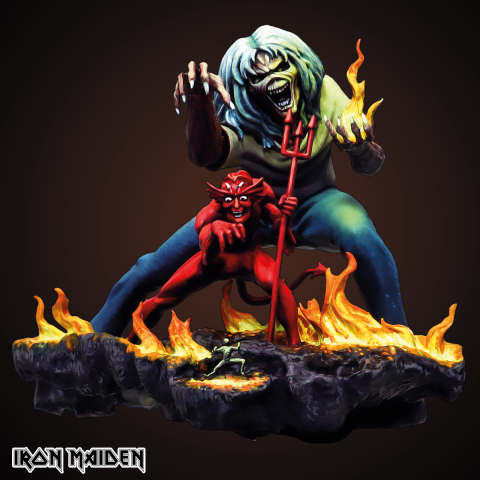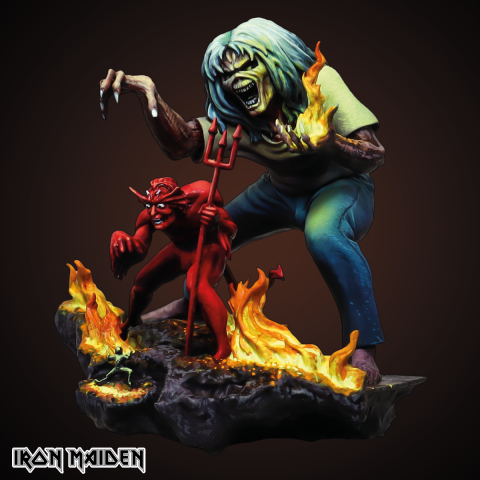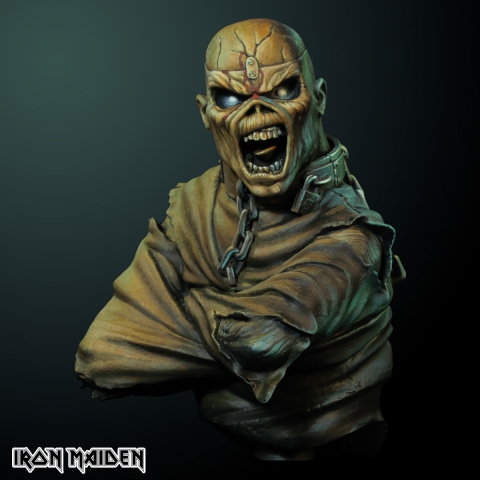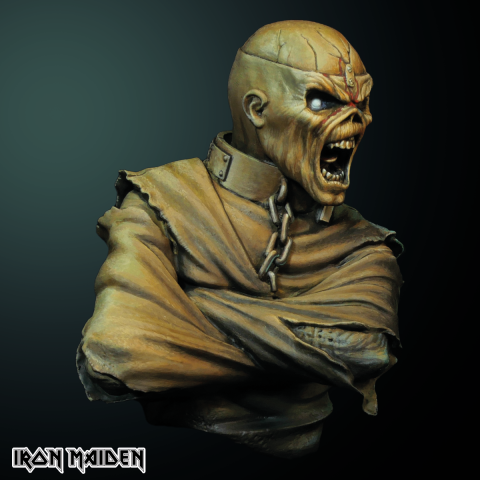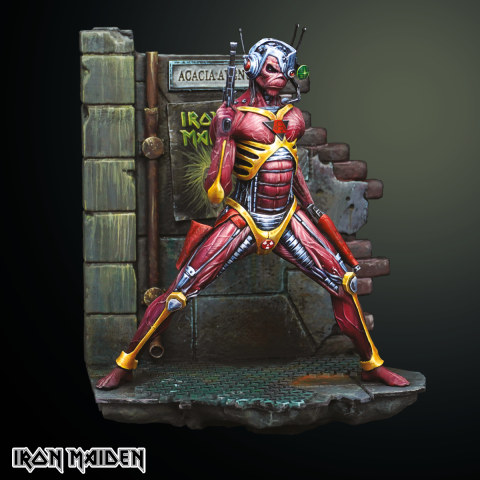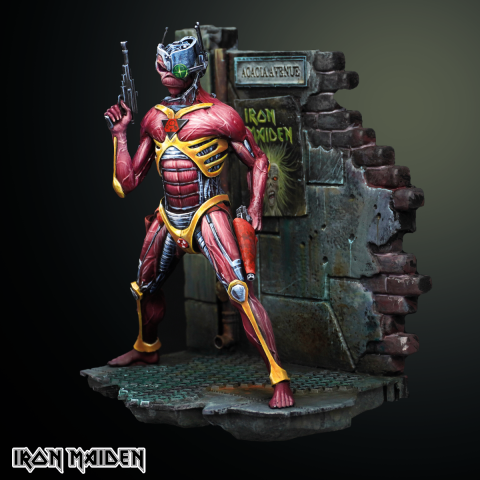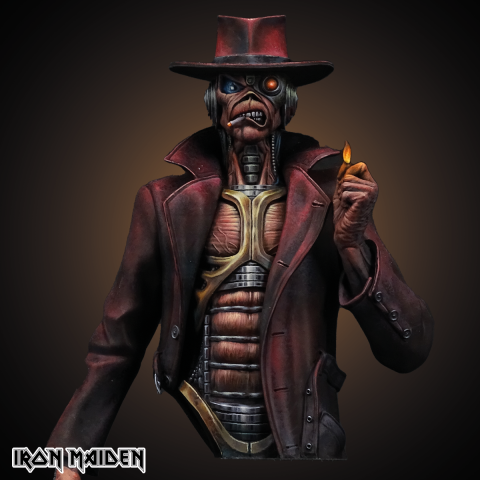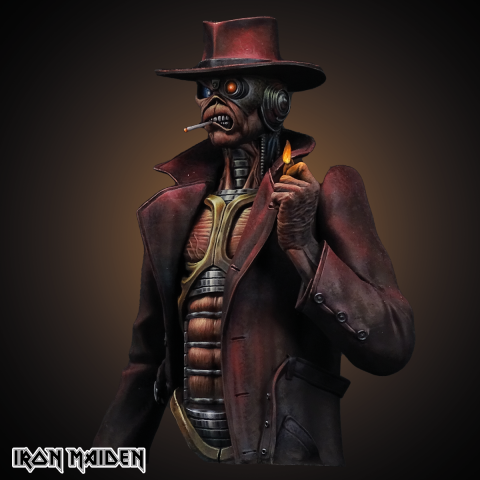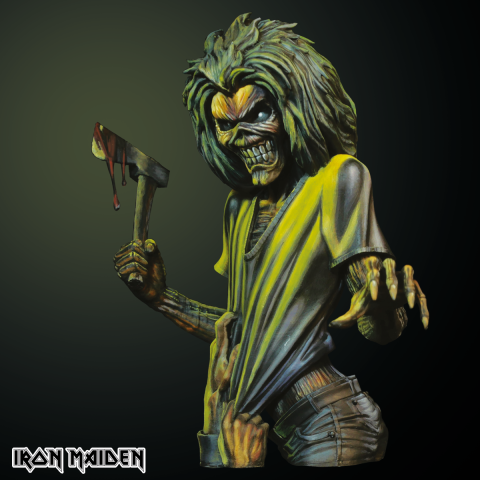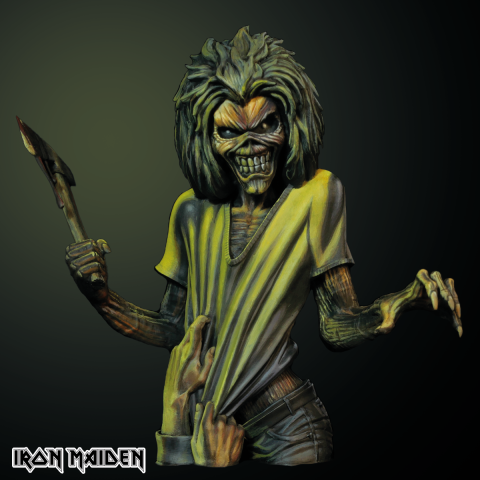NEW RELEASE - Number of the Beast Bust
What is in the box
Scale: 1/12 (150mm)
Material: High quality resin
Packaging: All pieces are safely packaged within a cardboard box in protective foam
Note:
- Figures/kits come unassembled and unpainted.
- Wooden plinth (base) is not included
The Number of the Beast is the third studio Iron Maiden. It was released on 22 March 1982 in the United Kingdom by EMI Records and in the United States by Harvest and Capitol Records. The album was their first to feature vocalist Bruce Dickinson and their last with drummer Clive Burr.
The Number of the Beast was met with critical and commercial success, and became the band's first album to top the UK Albums Chart and reach the top 40 of the US Billboard 200. The album produced the singles "Run to the Hills" and "The Number of the Beast", the former of which became the band's first top-ten UK single. Since the release of The Number of the Beast, "The Beast" has become an alternate name for Iron Maiden and was later used in the titles of some of their compilations and live releases, including Best of the Beast and Visions of the Beast.
Like all of Iron Maiden's album artwork during the 1980s and early 90s, this one was also painted by Derek Riggs. The cover was originally created for the song "Purgatory", but ended up to be the cover for The Number of the Beast. The original 1982 artwork includes a blue sky in the background; a mistake by the printers of the cover, this was corrected to black when the album was remastered for compact disc in 1998.
The album attracted controversy, particularly in the United States, due to the lyrics of the title track and the cover art depicting Eddie controlling Satan like a puppet, while Satan is also controlling a smaller Eddie. The concept was to ask "who's the really evil one here? Who's manipulating who?". According to Riggs, this was inspired by a Doctor Strange comic book, "which had some big villain with Doctor Strange dangling on some strings like a puppet – it was something I read as a child back in the 1960s, I think," while the images of hell were "taken from my knowledge of medieval European Christian art which was full of such scenes". In addition, Satan was supposed to have wings made out of lightning and smoke (which can still be seen vaguely in the final piece) but due to time constrain, Riggs was unable to complete it as intended. He also made Satan look like Salvador Dalí as a joke.
According to US professor Bryan A. Bardine, "this album evokes power, passion and music that present darker themes and images."










